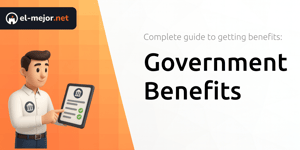In today’s fast-changing economic landscape, empowering young adults with essential financial knowledge is more critical than ever. By equipping the next generation with the tools to manage money wisely, we pave the way for lifelong financial well-being and resilience.
While enthusiasm for financial learning is high, many teens and young adults still lack access to structured education. This article explores the demand, gaps, and practical paths forward, offering inspiration and actionable advice to build a secure financial future.
Why Financial Education Matters
Financial literacy is not just about balancing a checkbook or understanding bank products. It’s about cultivating a mindset that values planning, informed decision-making, and accountability.
Young adults who master personal finance basics early can avoid costly mistakes later in life. From student loans to credit cards, healthcare expenses to retirement planning, every financial choice carries weight.
By embracing practical money management skills at an early age, individuals develop confidence and control over their futures, reducing stress and reinforcing positive behaviors.
Current Gaps and Public Demand
Surveys reveal overwhelming support for high school financial education, with 87% of U.S. adults and 68% of teens backing mandatory courses. Yet only 26 states require personal finance for graduation, and just 10 of 27 states that guarantee such courses have fully implemented them.
The result? A national patchwork of program quality and availability. Many teens report relying on family or self-study, while fewer than one in three have access to dedicated classes.
Primary Learning Sources
Family remains the front-line teacher for many young people. Approximately 38% of consumers credit relatives for their financial know-how, and 75% of teens look to their household for guidance.
Schools play a vital but underutilized role: while 52% of students learn some finance at school, only 15% consider it their main source. Reliance on informal instruction can leave significant gaps.
Bridging these divides requires collaboration between educators, parents, and community organizations to create consistent, high-quality learning opportunities.
Effective Educational Programs
Research shows that hands-on learning experiences—such as simulations and project-based activities—outperform traditional lectures. Experiential methods help young adults internalize concepts by managing virtual budgets or trading mock securities.
A robust program often integrates multiple delivery methods to cater to diverse learning styles and backgrounds.
- Classroom teaching with interactive discussions
- Workshops featuring real-world case studies
- Digital simulations and mobile learning apps
Programs that align content with daily expenses and long-term goals foster relevance and motivation, ensuring lessons translate into real-life actions.
Key Topics for Young Adults
Effective financial education covers a spectrum of essential topics, grounding theory in practical scenarios.
- Budgeting and expense tracking to control spending
- Saving strategies for emergencies and future goals
- Investing basics: stocks, bonds, and retirement accounts
- Responsible borrowing: understanding interest and credit scores
National Initiatives and Resources
Several organizations are leading efforts to democratize financial literacy, leveraging partnerships and technology to reach millions of students.
- ABA Foundation’s classroom programs delivered by banking volunteers
- Junior Achievement’s K-12 curriculum serving over 4.4 million students
- EVERFI’s free online modules, including bilingual resources
April’s designation as Financial Literacy Month amplifies these initiatives, spotlighting events and campaigns that engage schools and communities nationwide.
Practical Steps for Young Adults
Building financial confidence begins with small, consistent actions. Consider the following steps to start your journey:
1. Set clear, achievable goals for saving and spending. Define both short-term targets, like emergency funds, and long-term aspirations, such as homeownership.
2. Track every dollar using apps or simple spreadsheets. Awareness of inflows and outflows is the first step to control and optimization.
3. Create a realistic budget that allocates money for essentials, fun, and savings. Adjust regularly to reflect changing priorities.
4. Automate savings contributions, even small amounts, to build momentum and cultivate the habit of paying yourself first.
5. Explore low-cost investment options—index funds, micro-investing apps—and learn the power of compound growth.
6. Monitor and build your credit responsibly by paying bills on time, keeping balances low, and reviewing credit reports annually.
7. Never stop learning: subscribe to reputable finance blogs, attend workshops, and engage with mentors who model strong financial behaviors.
Conclusion: Building a Secure Financial Future
Financial education for young adults is not a luxury—it’s a necessity. By combining family influence, school programs, and national initiatives, we can create a supportive ecosystem where every young person gains the knowledge and confidence to thrive.
With solid foundation for financial success, young adults can navigate life’s financial challenges with poise and progress toward their dreams. The journey begins today, one informed decision at a time.
References
- https://www.aba.com/about-us/press-room/press-releases/new-survey-americans-support-financial-education-in-schools
- https://www.occ.treas.gov/publications-and-resources/publications/community-affairs/financial-literacy-updates/financial-literacy-1st-quarter-2025.html
- https://cricketmedia.com/news-press/crickettogether-news-resources/building-money-smarts-how-early-financial-education-empowers-the-next-generation/
- https://www.weforum.org/stories/2024/04/financial-literacy-money-education/
- https://jagkc.org/68-percent-teens-want-financial-education/
- https://www.frontiersin.org/journals/education/articles/10.3389/feduc.2024.1397060/full
- https://everfi.com/k-12/financial-education/
- https://civicscience.com/gen-z-financial-literacy-younger-americans-face-uncertainty-but-are-more-proactive-in-saving-and-seeking-financial-advice/










